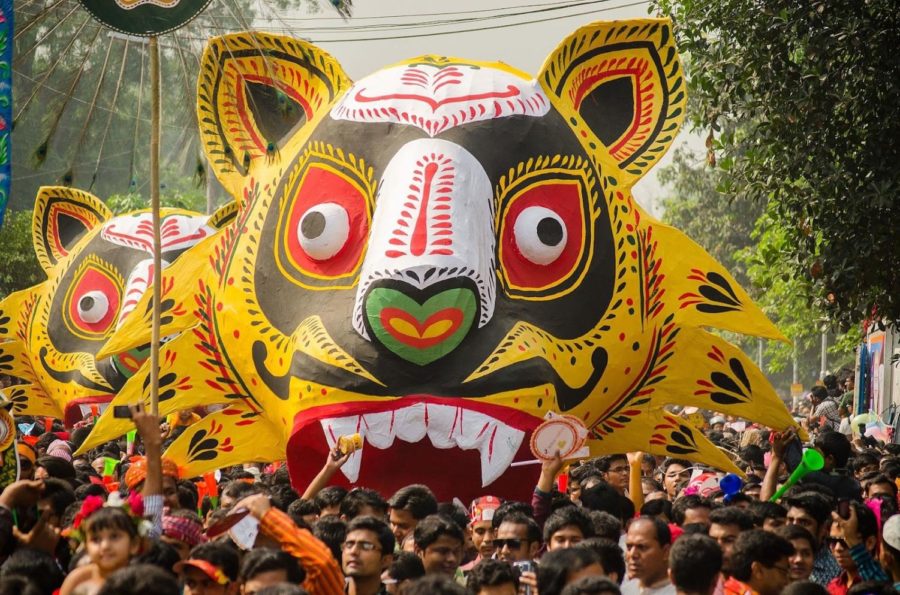Pohela Boishakh: The Bengali New Year
How a tax problem led to the creation of a new calendar and a popular annual festival in the Bengal region.
Abidhasan00, CC BY-SA 4.0
Mangal Shovajatra procession on Pohela Boishakh, Dhaka, Bangladesh, 2014
The holiday of Pohela Boishakh, which took place this year on April 14th, 2022, ushered in a new year for all Bengalis.
At the break of dawn, artists from Chhayanaut (an institution devoted to Bengali culture) sing legendary poet and polymath Rabindranath Tagore’s famous song, ‘Esho hey Boishakh, esho, esho (come Oh Boishakh, come),’ welcoming the first day of the Bengali new year. Thousands of people gather in the streets of Dhaka carrying gigantic paper-mache and balloon replicas of birds, fish, animals, folk tale characters, and other cultural symbols, joining the parade of Mangal Shobhajatra — an annual mass procession organized by teachers and students of Dhaka University’s Fine Arts department.
Colorful patterns drawn using home-made rice kernels and designs influenced from traditional folk art paint the front yards of Bengali homeowners and line the sidewalks of main streets. Songs and delicious aromas fill the air, while laughter and celebration stretches the time, giving everyone the perfect excuse to break free from their daily hurdle of responsibilities and spend the day with their loved ones and families.
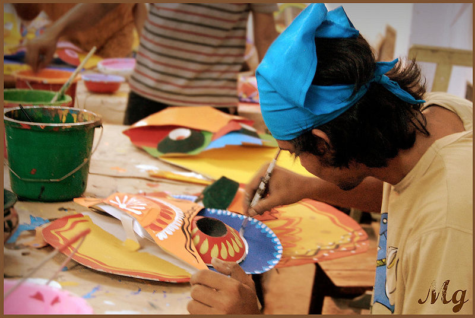
(Mithila Guha, CC BY-SA 2.0 <https://creativecommons.org/licenses/by-sa/2.0>, via Wikimedia Commons)
Background:
Unlike many other festivals that are linked to folklore or religion, Pohela Boishakh is a celebration that was created for the Bengali people and the Bengal region. The event dates back to the Mughal period, when taxes were collected using the Islamic Hijri calendar. This, however, created an issue, because the crops were not ready to harvest, making it impossible for people to pay their taxes on time. As a result, Emperor Akbar devised a new calendar so that people could successfully pay their taxes when they were due. Thus came Pohela Boishakh, the first day of the Bangla calendar, the pride and joy of Bengal.
Baisakhi Mela:
The most popular event of the day is the Boishakhi melas (fairs/parades). It is where the people of the community come together and celebrate the day with family and friends. The Melas are mainly locally arranged in villages where vendors and artisans sell various types of traditional products such as homemade sweets, clay dolls, handmade toys, seasonal fruits and vegetables, handloom sarees, glass bangles, bamboo flutes, and many other goods. Nowadays, alongside traditional goods, there are many branded jewelry that have found their place at these fairs. Along with the shopping experience, the fairs also provide a source of entertainment. Circuses, magic shows, chorus singing, and plays take place in designated fairgrounds.
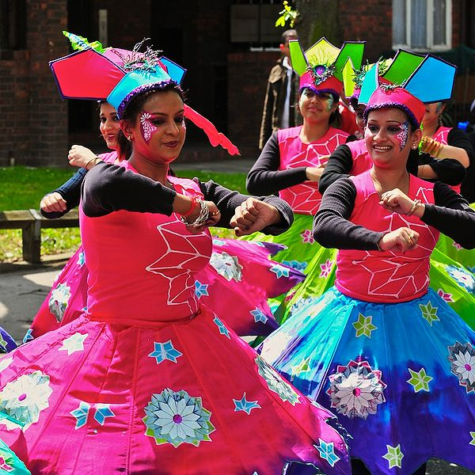
(Shahed Mamun, CC BY 2.0 <https://creativecommons.org/licenses/by/2.0>, via Wikimedia Commons)
Celebration:
Like any other new year, Pohela Boishakh inspires people to start the year with new hope and new inspirations. Families come together to celebrate with each other. Children engage in full, formal bows throughout the entire day, touching the feet of elders to seek blessings, and friends greet each other with hugs and kisses.
On this day people wake up early, take a bath, and dress in traditional clothes. Women typically wear red and white sarees with blouses and adorn themselves with colorful bangles and flowers, while men wear red and white dhotis and Punjabis. People also celebrate this day by eating traditional dishes such as Panta Bhat (soaked rice) with fried ilish mas (hilsa fish) and other curries. However, this does not mean that there is no Pohela Boishakh without wearing red and white and eating fried hilsa fish.
“It’s not the red and white clothing or foods that makes the day so special; rather, it’s the spirit of Boishakh,” said Sadia Afrin, a member of the Bangladeshi community. “Although nowadays people put so much emphasis on these small things, they weren’t always there. Back then people just wore clothes that they could best afford because it was a new year and people wanted to celebrate it as best as they could. The color code is something that came later on. It is the same thing with eating panta ilish.”
Halkatas are also a special part of Pohela Boishakh. This is a financial affair that takes place in villages, towns, and cities where traders and businessmen open their stores to welcome their new and old customers and share sweets with them. Old clients would look at their past to clear up the due before a new year starts.
“However with time, the market has changed. Nowadays Halkatas are not as frequent as before. Nowadays it’s all about the money you owe, and there’s no longer that genuinity in celebrating halkattas,” said Abdus Samad, a local from Bangladesh.
Conclusion:
Although there are things that have changed with time, Pohela Boishakh still serves as an inspiration for the Bengali nation. It is celebrated by countless Bengalis living aboard in countries such as the U.S.A., the United Kingdom, and Australia. Today, it is the only holiday that connects all the Bengalis in the world together regardless of where they live, the dialect they speak in, or the religion they practice. It is not about lavish clothing, delicious food, or colorful decorations. It is really about celebrating the rural roots and history of the Bengal region.
“It’s not the red and white clothing or foods that makes the day so special; rather, it’s the spirit of Boishakh,” said Sadia Afrin, a member of the Bangladeshi community.
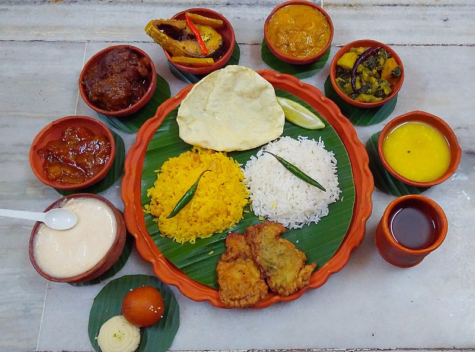
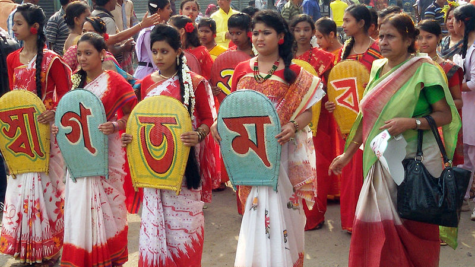
(Labib Ittihadul from Dhaka, Bangladesh, CC BY 2.0 <https://creativecommons.org/licenses/by/2.0>, via Wikimedia Commons)
Tasnim Tamanna is a Staff Reporter for 'The Science Survey.' Tasnim finds journalism to be appealing because she loves to tell stories through her articles....

